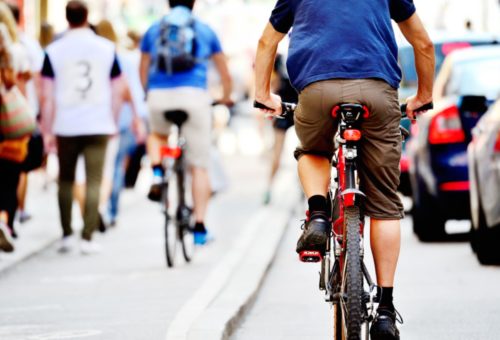Major changes to the Highway Code were introduced onto UK roads from Saturday 29th January 2022, which aim to protect the most vulnerable road users and put more emphasis on the responsibilities of those road users most likely to pose a threat or cause an accident on the road.
Some of the changes are being classed as ‘clarifications’ of existing rules, particularly with regards how cyclists should use the road, but the major changes are a reaction to accident statistics released by the Department for Transport (DfT), which show clearly that pedestrians and cyclists are the most likely road users to be killed or seriously injured on UK roads.
What are the new Highway Code rules?
Three major new rules (H1, H2 and H3) have been introduced from the end of January:
H1: A hierarchy of road users
This has been created so that those users who carry the biggest potential to cause harm – such as drivers of large heavy goods vehicles (HGVs), trucks or vans – are given more responsibility to reduce their threat on the road. Pedestrians, and in particular children, elderly adults and the disabled, have been identified as “the most likely to be injured in the event of a collision”, and therefore the new laws state that drivers must take more care to watch out for pedestrians as well as cyclists and horse riders.
Indeed, pedestrians sit at the top of the new hierarchy, followed by cyclists, horse riders, motorcyclists, cars, vans and large passenger vehicles or HGVs. The DfT plan to release widespread messaging to promote this new law, using the existing Think! campaign to raise awareness.
H2: Priorities for pedestrians
In another major change, pedestrians now have priority when waiting to cross a road at a junction. Previously vehicles had the right of way at a junction, but now drivers and motorcyclists must give way to any pedestrians in the act of or waiting to cross the road at a junction. Cyclists must also give way to pedestrians who are crossing or waiting on a shared cycle lane.
H3: Priorities for cyclists
As a recognised road user group near the top of the new hierarchy, cyclists have been given new priorities when using the road. Most importantly, cyclists must be given priority by drivers in certain situations, such as on a roundabout and at junctions, when changing lanes and in slow-moving traffic.
Clarifying Highway Code rules for cyclists
In addition to the three major law changes, there are some key amendments introduced also, chiefly to improve cyclist and pedestrian safety, such as:
- Guidance for drivers to leave a minimum of 1.5 metres room when overtaking a cyclist
- Guidance for drivers to use the ‘Dutch Reach Technique’ when opening a car door, ie. using the arm opposite to the one closest to the door, which necessitates turning the body to look over your shoulder and see a potential cyclist or pedestrian approaching.
Cyclists have also been reminded of key Highway Code rules in the changes, with specific clarification made regarding:
- When cyclists should cycle in the middle of a road (only on quiet roads, in slow-moving traffic and when approaching a junction) and when they should be at least 0.5 metres away from the kerb (when on a busy road or traffic is moving faster than they are).
- How cyclists should be considerate to other road users when cycling in groups.
- How much distance cyclists should leave when passing parked vehicles and how much distance vehicle drivers should leave when overtaking cyclists.
The new Highway Code rules came into force from January 29th and if you require any assistance in understanding or interpreting the new rules, or if you have been involved in a road traffic accident and need to understand how the new rules could affect you, contact Ison Harrison’s personal injury team today and we can help to clarify your situation and advise on how to resolve it.


















